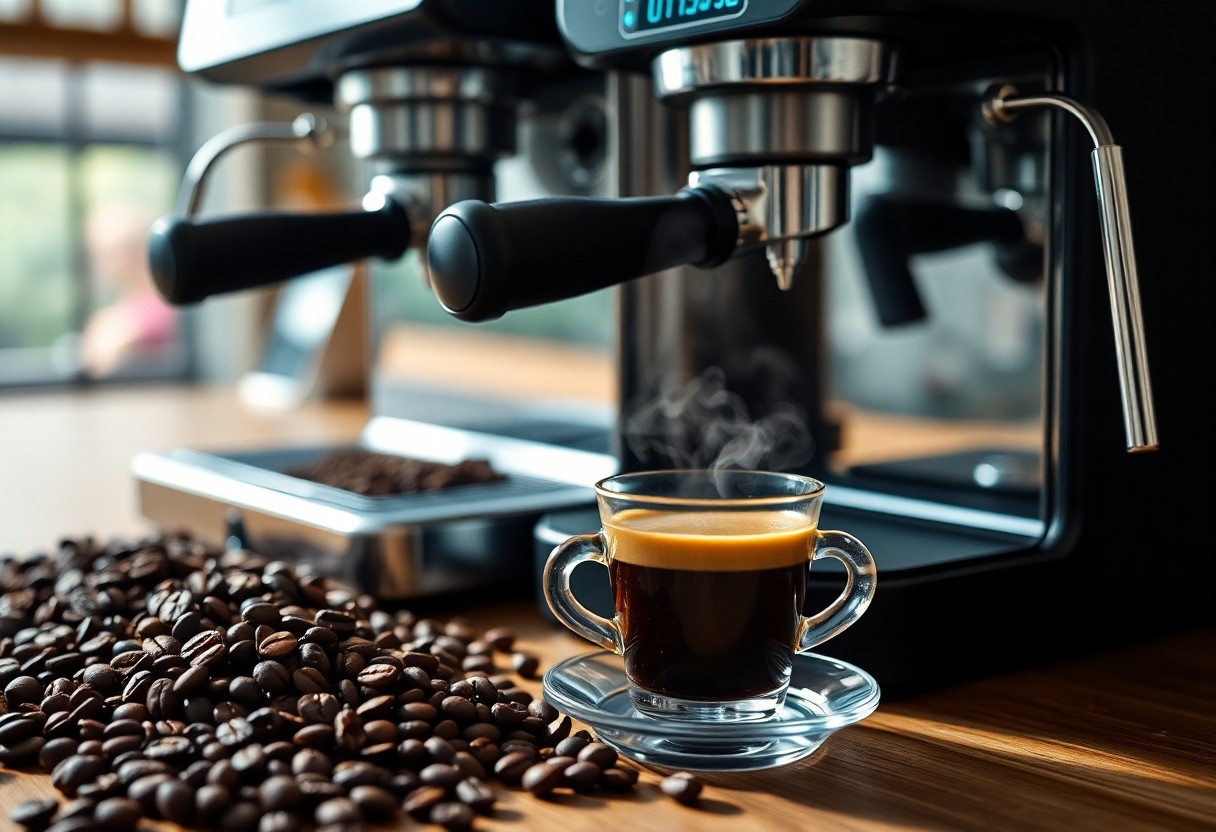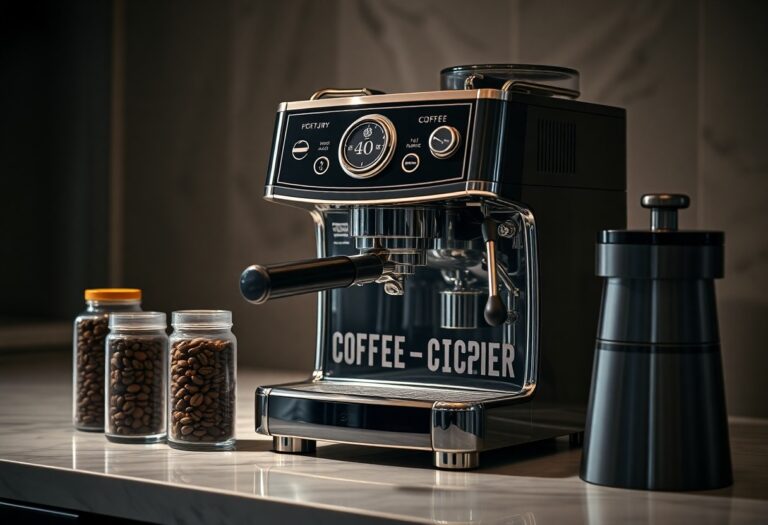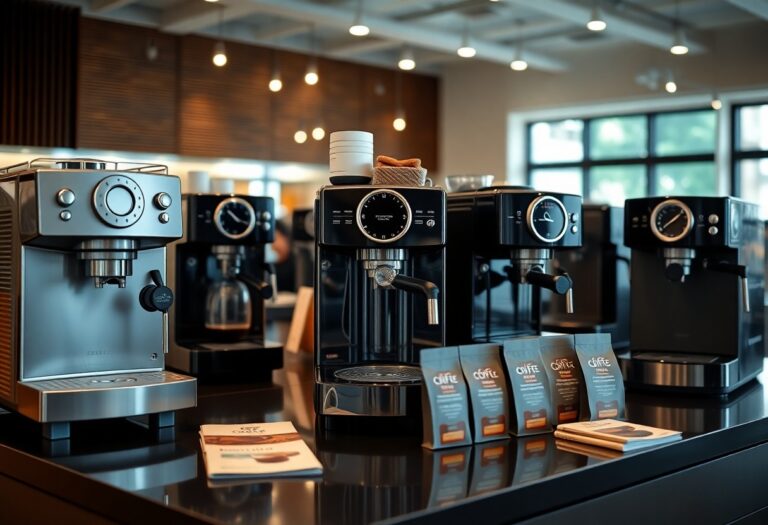What Coffee Do I Need for Espresso Machine – Essential Requirements
Most coffee lovers often wonder what type of coffee to use with their espresso machine for the best results. To achieve that perfect shot, you need to use freshly roasted, high-quality beans that are finely ground to create a rich flavor profile. The ideal espresso coffee should have a balance of sweetness and acidity, with some boldness to stand out in your cup. Selecting the right beans not only influences the taste but also makes a significant difference in the extraction process, ensuring your espresso is aromatic and satisfying.
Key Takeaways:
- Choose coffee beans specifically designed for espresso, typically a medium to dark roast for optimal flavor extraction.
- Grind size is crucial; a fine grind is needed for espresso machines to ensure proper water flow and extraction.
- Freshness matters; use freshly roasted and ground coffee to achieve the best taste and aroma.
- Consider the coffee-to-water ratio; generally, a standard espresso shot requires about 18-20 grams of coffee per 1-2 ounces of water.
- Experiment with different origins and blends to find the flavor profile that suits your taste preferences in espresso.
Coffee Bean Characteristics Essential for Espresso
The choice of coffee bean significantly impacts the quality and flavor profile of your espresso. Espresso is typically crafted using Arabica or a blend of Arabica and Robusta, with Arabica beans offering sweetness and acidity, while Robusta adds body and crema. Beans should be freshly roasted, with a roast level tailored for espresso, aiming for a balance of sweetness, bitterness, and complexity in the cup.
The Role of Roast Level in Flavor Development
Roast level plays an crucial role in developing flavors for your espresso. Darker roasts tend to produce bold, rich flavors with lower acidity, while medium roasts offer a more balanced profile, preserving subtle hints of fruitiness and sweetness. The roast affects not just taste, but also the extraction process, as different roast levels influence the solubility of solids and oils during brewing.
Understanding Grind Size for Optimal Extraction
Your grind size is equally vital for getting the best from your espresso machine. A fine grind maximizes the surface area of the coffee, allowing for efficient extraction during the short brewing time typical for espresso. If the grind is too coarse, under-extraction may lead to a weak, sour shot; conversely, if too fine, over-extraction can yield a bitter taste, emphasizing the importance of dialling in your grinder settings to suit your espresso beans and machine.
A good rule of thumb is to aim for a grind similar to table salt—but this may require adjustments based on your specific beans and machine. For example, Arabica beans typically need a finer grind compared to the coarser grind suitable for brewing methods like French press. You might experiment with various grind levels to find the sweet spot that allows the unique characteristics of your chosen beans to shine through, giving you that perfect espresso shot every time.
The Importance of Freshness in Espresso Brewing
Freshness plays a vital role in achieving the perfect espresso shot. Over time, coffee beans lose their flavor compounds, leading to a dull and less complex taste profile. Freshly roasted coffee holds onto its unique qualities longer, providing rich, vibrant notes that enhance your brewing experience. Choose beans that have been roasted within the last two to four weeks for optimal freshness, ensuring that each cup of espresso brings out the full spectrum of flavors intended by the roaster.
Impact of Coffee Age on Flavor Notes
As coffee ages, it undergoes various chemical changes that dull its original flavor notes. Within days of roasting, beans begin to oxidize, leading to a decline in freshness. Aged beans may present flat, sour, or even stale tastes, overshadowing the intended nuances and character—key elements for a truly exceptional espresso.
Best Practices for Coffee Storage and Preservation
To maintain the freshness of your coffee beans, store them in an airtight container away from light, heat, and humidity. Opt for a cool, dark place to ensure they remain in prime condition. Avoid transparent containers that expose beans to sunlight, as light can rapidly degrade flavor compounds.
Airtight containers made from materials like ceramic or opaque glass offer excellent protection against environmental factors. For longer storage, consider vacuum-sealing your coffee beans or using specialty bags with one-way valves, which allow gases to escape without letting air enter. Grinding only what you need right before brewing will also preserve those imperative aromatics and robust flavors. Adhering to these practices ensures you enjoy the full range of tastes and aromas that freshly roasted beans have to offer, making your espresso experience exceptional every time.
Choosing the Right Coffee Origin for Your Espresso
Selecting the right coffee origin can dramatically influence the quality and flavor of your espresso. Different regions produce beans with unique characteristics, allowing you to tailor your espresso experience to your preference. For a rich and balanced espresso, consider blends or single origins from South America, while African coffees can provide vibrant acidity and fruitiness. Asian coffees often bring a heavier body and earthy flavors, making each origin a distinct player in your espresso game.
Flavor Profiles of Popular Coffee Regions
Each coffee-growing region imparts specific flavor profiles to the beans produced there. For example, Colombian coffees are widely known for their well-balanced, nutty flavors with a hint of sweetness, making them versatile for espresso. Ethiopian varieties, on the other hand, may offer floral notes and bright acidity, catering to those who enjoy a more complex cup. In contrast, Sumatran beans deliver bold, earthy flavors with a full body, suitable for rich, dark espresso blends.
How Terroir Affects Bean Quality and Taste
Terroir, the environmental factors influencing crop growth, plays a significant role in coffee quality and flavor. Factors such as soil composition, altitude, climate, and even farming practices contribute to the complexity of coffee beans. For instance, beans grown at higher elevations often develop more nuanced flavors due to slower maturation processes. Specific minerals in the soil can enhance sweetness or acidity, resulting in a distinctive profile. By selecting beans with favorable terroir, you can elevate your espresso from ordinary to exceptional.
Consider the differences in growing conditions: beans cultivated in volcanic soil typically exhibit a richer flavor profile due to increased mineral availability. Regions like Colombia, where beans are grown at altitudes exceeding 1,200 meters, often yield coffee with added acidity and depth. On the other hand, lower-altitude beans may lack the brightness that many espresso aficionados seek. Understanding these variations allows you to choose the right beans, ensuring your espresso reflects the best attributes of its origin and the care taken in its cultivation.
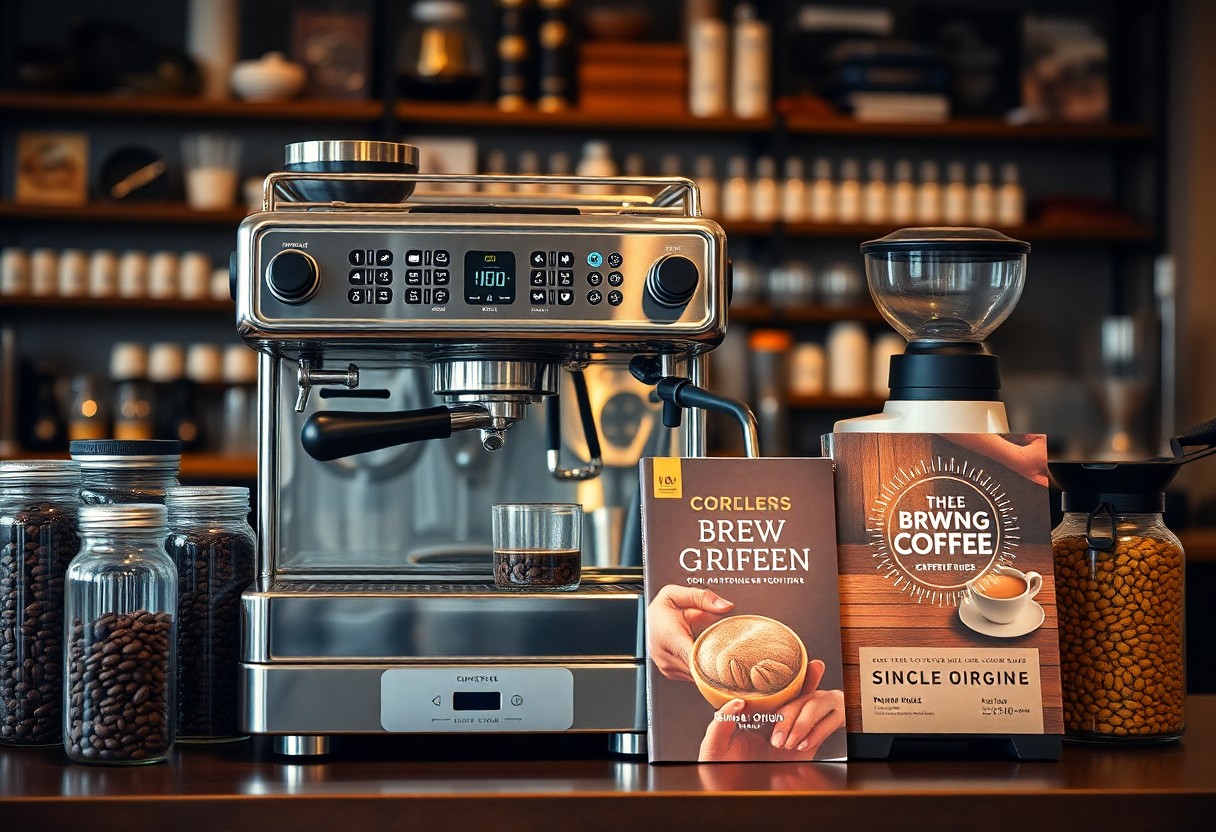
Blends vs. Single Origin: Making Informed Choices
The decision between blends and single origin coffees can significantly impact your espresso experience. Blends are designed to balance flavors and offer consistency, while single origins showcase unique characteristics tied to specific regions. When opting for your coffee for an espresso machine, weighing these options will help you align your preferences with the desired flavor profile and brew strength.
Benefits of Espresso Blends for Consistency
Blends provide a reliable flavor experience by combining beans from multiple origins, resulting in a balanced and harmonious profile. This consistency is especially beneficial for espresso enthusiasts who require a dependable taste across different batches. Manufacturers often create blends to target specific flavor notes, enabling you to replicate your favorite espresso shot without risking the unpredictable variations of single origin brews.
Exploring Complexity with Single Origin Coffees
Single origin coffees allow you to dive deep into the intricate flavors and aromas associated with specific regions, offering a unique tasting experience. Each origin brings distinct characteristics, influenced by factors such as soil type, altitude, and processing methods. This not only enhances the overall quality but also creates an opportunity to explore different flavor profiles ranging from fruity and floral to earthy and chocolatey.
For instance, consider a single origin coffee from Ethiopia, known for its bright acidity and fruity notes, compared to a Brazilian coffee with deep chocolate undertones. By exploring various single origins, you can appreciate the diverse nuances of coffee, which might deepen your understanding of areas like terroir and varietals. This exploration can lead to discovering new favorite flavors, making every cup a unique adventure in your coffee journey.
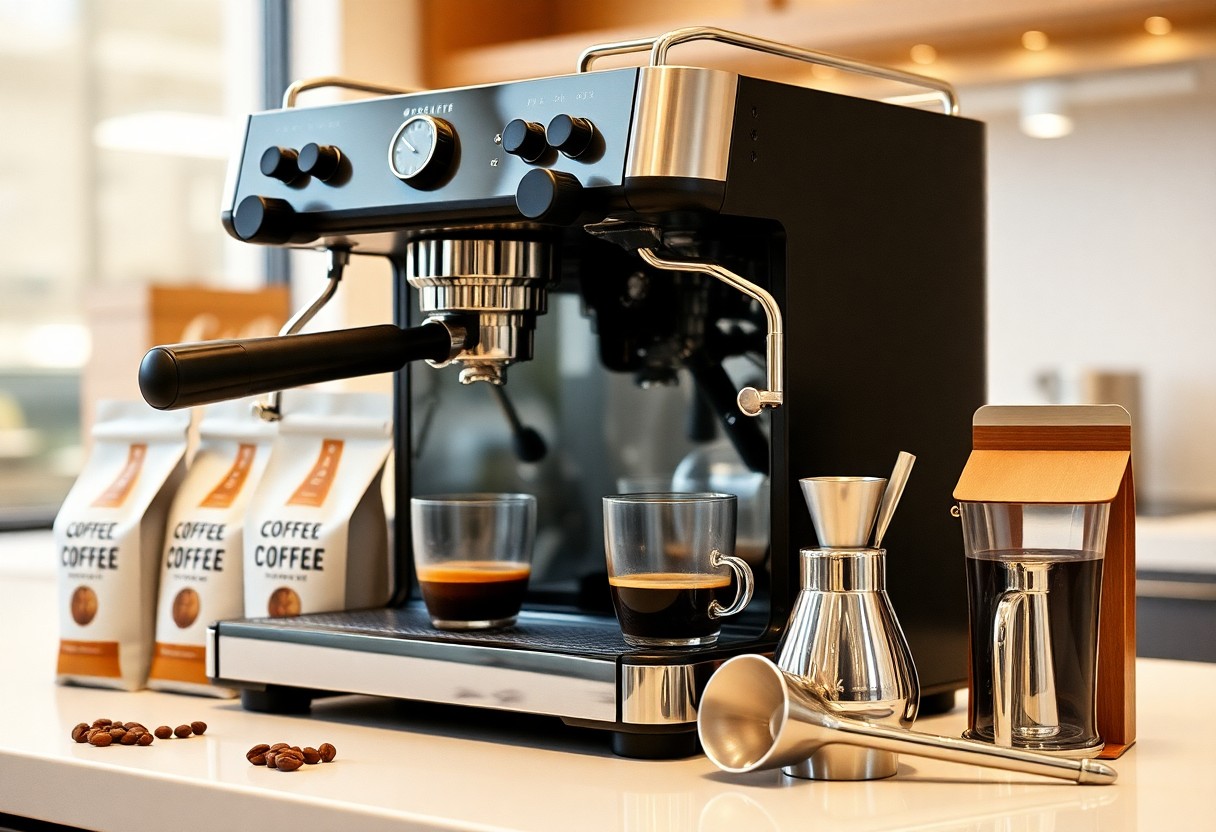
Espresso Machine Compatibility: A Detailed Guide
Understanding the compatibility of your espresso machine with different coffee grounds is important for achieving the perfect shot. Not every machine is designed to work with all kinds of coffee grinds, making it necessary for you to advocate for the right What Type of Ground Coffee for Espresso Machine. Your choice should be tailored to your specific model’s requirements to create a flavor that meets your expectations.
Understanding Espresso Extraction Standards
A strong espresso shot extracts flavors efficiently within a specific range of time and pressure. Ideally, you want to aim for an extraction time between 25 to 30 seconds and a pressure of around 9 bars to capture the rich flavors and aromas. Maintaining these standards ensures a balanced shot with the desired crema, resulting in a remarkable espresso experience that is both smooth and rich.
Adjusting to Your Machine’s Specifications and Preferences
Each espresso machine has distinct specifications that influence the type of coffee grind, dose, and tamping pressure you should use. Exploring your machine’s manual and adjusting factors like water temperature and pressure profiling can significantly enhance your brewing process. Regularly experimenting with grind size and coffee dose will also help you discover the optimal settings for your taste preferences.
Your machine may require fine-tuning to reach its full potential, which means you might need to adjust the grind size to be coarser or finer based on how your espresso extracts. For instance, if your espresso is dripping too quickly, your grind might be too coarse; conversely, if it’s taking longer than 30 seconds, you may be dealing with a grind that’s too fine. Keep notes on coffee types, grind sizes, and brewing times to refine your espresso-making skills over time. The balance between these variables ultimately allows for a personalized espresso that aligns perfectly with your palate.
Final Words
Summing up, selecting the right coffee for your espresso machine involves understanding the imperative requirements that suit your taste preferences. You should look for freshly roasted beans, preferably medium to dark roasts, with a fine grind to optimize extraction. It’s beneficial to explore single-origin coffees or blends that appeal to your palate. Always ensure your coffee is freshly ground right before brewing for the best flavor. By focusing on these elements, you can elevate your espresso experience and savor the rich, bold flavors that your machine can deliver.
Q: What type of coffee beans should I use for my espresso machine?
A: For an espresso machine, it’s best to use high-quality coffee beans, specifically those labeled as espresso blends. Look for beans that are medium to dark roast, as they tend to provide the rich and robust flavors associated with espresso. Single-origin beans can also be used if you enjoy specific flavor profiles, but make sure they are suitable for espresso brewing. Freshness is key, so choose beans that have been roasted within the last few weeks.
Q: How fine should I grind my coffee for espresso?
A: The grind size for espresso should be very fine, similar to that of powdered sugar or table salt. A consistent grind is vital to ensure optimal extraction during the brewing process. Too coarse a grind will result in under-extraction, leading to a weak shot, while too fine a grind may result in over-extraction, causing bitterness. It’s advisable to use a high-quality burr grinder for the best results.
Q: Do I need to use a specific water temperature for brewing espresso?
A: Yes, water temperature is an important factor in brewing espresso. The optimal water temperature for espresso extraction is between 195°F to 205°F (90°C to 96°C). If the water is too hot, it can scorch the coffee, while water that is too cool can lead to under-extraction. Many espresso machines have built-in temperature control, but it’s good to check and adjust accordingly.
Q: How much coffee should I use for a single shot of espresso?
A: For a standard single shot of espresso, you typically use about 7 to 9 grams of coffee. For a double shot, which is more commonly served, you should use 14 to 18 grams. It’s important to weigh your coffee for precision, as the amount can affect the extraction and resulting flavor. Using a scale can help achieve the desired balance in taste.
Q: Is it necessary to tamp the coffee grounds before brewing espresso?
A: Yes, tamping is an vital step in preparing coffee for espresso. After filling the portafilter with ground coffee, it’s important to tamp it down with even pressure, ideally around 30 pounds of force. This compacts the coffee grounds, creating resistance against the water flow and ensuring even extraction. An inconsistent tamp can lead to channeling, where water flows unevenly through the coffee, resulting in uneven extraction.

